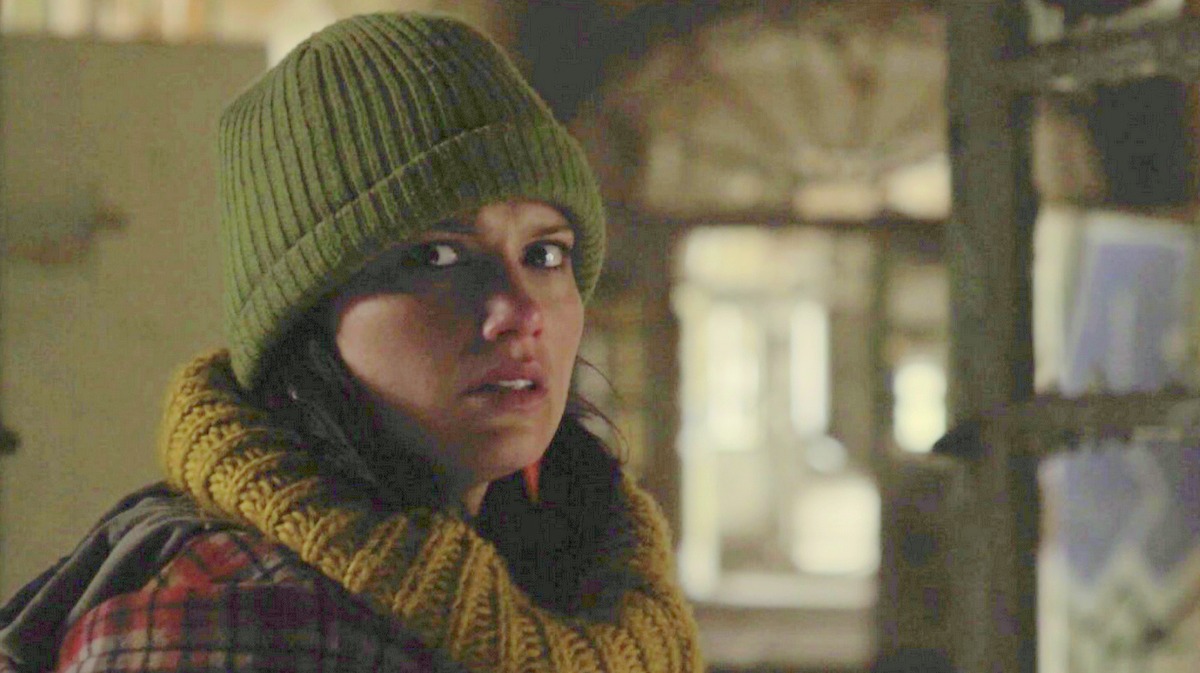
A Film Festival Case Study
Narrative | Dramatic Features
Film Name: GRAVID
Genre: Horror, Drama
Length of film: 15 minutes
Date: 2023
Director: Laura Jai Smith
Producer: Laura Jai Smith and Elena Valeri
Writer: Laura Jai Smith
Cinematographer: Estefania Carpio
Editor: Mira Thu
Composer: Oliver Wegmüller
Production Company: Borderland Productions
Budget: £12,000
Financing: Support in kind/Self financed
Shooting Format: Alexa Mini
Screening Format: DCP, Scope- 2.39
World Premiere: HollyShorts 2023
The Official Trailer for GRAVID
Watch The Trailer for GRAVID directed by Laura Jai Smith
A Short Biography of Laura Jai Smith
Laura Smith is known for Gravid (2023), Eva (2005) and Curfew (2019). Laura is an award-winning film and television director. Her work was described by Indiewire as “an intriguing marriage of the psychological and the visceral”. She is developing feature films as a director and writer/director with the British Film Institute and Lunar Lander Films among others. Her award-winning short films were financed by Channel 4, British Film Institute, Film London and The Arts Council among others.
The Laura Jai Smith Interview
indieactivity: What is your film about?
Laura Jai Smith (LJS): GRAVID is about a woman who discovers she may be pregnant and also discovers her boyfriend wants a child. She doesn’t want children but keeps this a secret for fear telling him will end their relationship. This secret starts to literally grow inside her: a sinister entity that is determined to come out.
GRAVID is a horror film about the pressure to conform, the fear of rejection and the desire to balance who we are alongside acceptance from those we love.
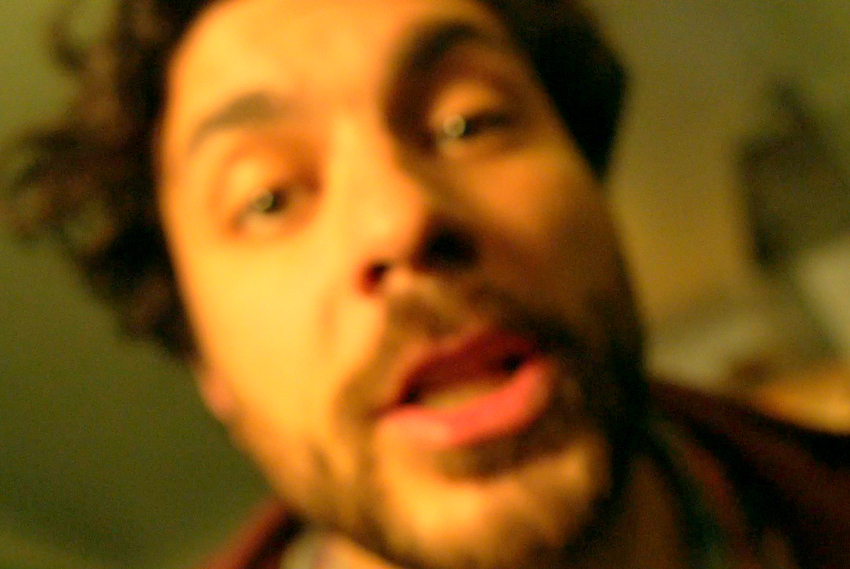
The film draws on my experience that, once you have been in a relationship for a certain time, there can be social pressures or assumptions by others that you will have children, especially when your friends are having them. It’s specifically inspired by a relationship I was in when my partner started wanting children and I feared telling him I didn’t in case our relationship ended. In hindsight I can see that he didn’t talk about his feelings either. It was as if we both had secrets growing inside us.
I also wanted to portray a woman who doesn’t want children as this is still rarely seen on screen.
Indiewire called your work “An intriguing marriage of the psychological and the visceral” What has the audience/ critical response to Gravid been so far?
Laura Jai Smith (LJS): We’ve just had our world premiere in Los Angeles as part of the Oscar Qualifying HOLLYSHORTS festival where we got a great audience response and great reviews. I was especially happy that people saw the film’s themes as relevant to their own lives and that the use of horror to express existential themes landed with both drama and horror audiences and reviewers. People also had very physical reactions to the body-horror which is a great compliment! We’ll screen at the UK’s BAFTA qualifying AESTHETICA festival in November and have some other selections that we’re really excited about but unfortunately can’t yet talk about publicly.
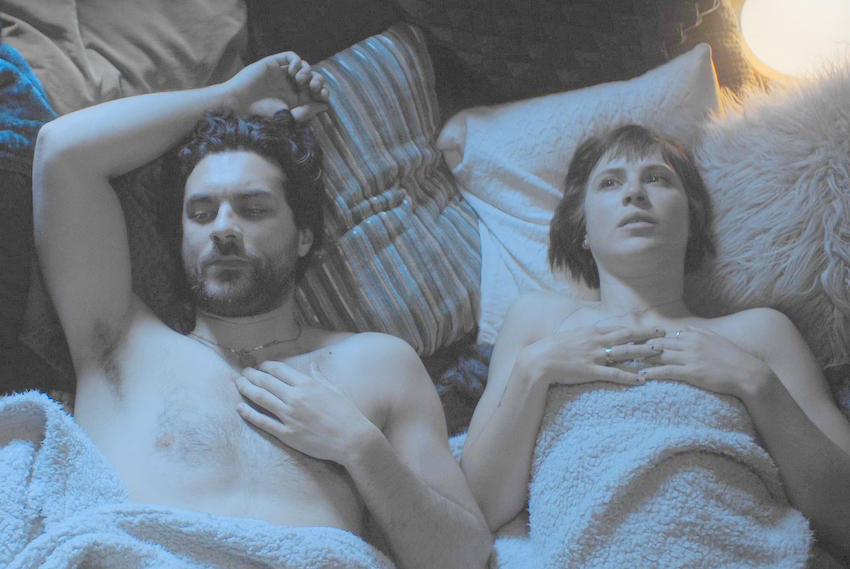
On the subject of drama and horror- how did you work with the actors? They had to portray a realistic, intimate relationship whilst also reacting to some pretty surreal stuff- how did you rehearse to get those performances?
Laura Jai Smith (LJS): I discovered after casting that Eleanor Wyld and Max Rinehart knew each other and had hung out a lot in the past which I think contributed to them creating a realistic relationship quickly. However they are both experienced actors and I am sure they would have found a way even if they hadn’t met before. We had two rehearsals of a few hours each. This improvised back story moments that related to the scenes-so when one character wanted something from the other- they had an emotional reason to make that approach.
We also improvised around the off-screen influences on the characters’ desires to have/not have children- there is often still a cultural assumption that a woman’s default position is to want children and a man’s default position is ambivalence and neither of Gravid’s characters fall into this thinking. We also talked about what the “horror” means for the characters existentially-how they justify the fantastical in real terms. It was important that these reactions were rooted in real emotions that contributed to their arcs and the themes of the film.
We also had the technical challenge of the prosthetics – it’s a very physical undertaking for Eleanor and required a lot of flexibility from other departments-she was really open and communicative about how she could achieve certain things and that was hugely helpful.
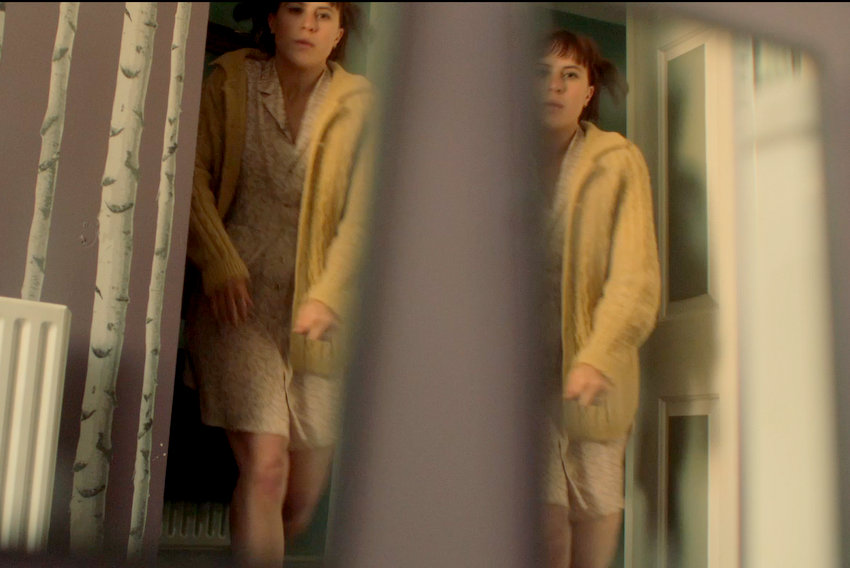
The prosthetics are truly disgusting – in a good way! What was your inspiration? Was it all practical effects or were there some Vfx too?
Laura Jai Smith (LJS): The majority of the effects are in camera because I love that aspect of horror: some of my earliest memories are Romero’s Dead Trilogy and early Cronenberg. I found a great collaborator in Sfx Designer Ruth Pease (BIFA nominated for her previous work) who shared my passion for this approach. It was essential to us that the horror was rooted in something real and we looked at Teratomas for inspiration – a medical phenomena where a tumour made of hair, nails and skin grows inside someone from the foetal stage often undiscovered until they are an adult. In this sense Amy’s conflict with Johann makes her face up to who she is, but the reality has been inside her for much longer: she realises she is in danger, not from her relationship ending, but from hiding her true self.
We did use a small amount of VFX enhancement and like the rest of the film I wanted this to be rooted in something real- for example the tail flicks a little like a snake- and I loved working with Jonathan Alenskas and Bob Pipe (Fox and Wizard) who shared my vision of this. Working with them also gave me new ideas – like the moment when the air bubble comes out of the lump which wasn’t in the script. I wanted a moment when the “lump” seems to be still or dead and then suddenly it “breathes”/ is alive- as this creates a moment for the audience when the horror becomes “real” rather than something she is imagining. It was inspired by watching crabs- sometimes they keep so still they could be dead but then a tiny air bubble gives it away that they are alive.
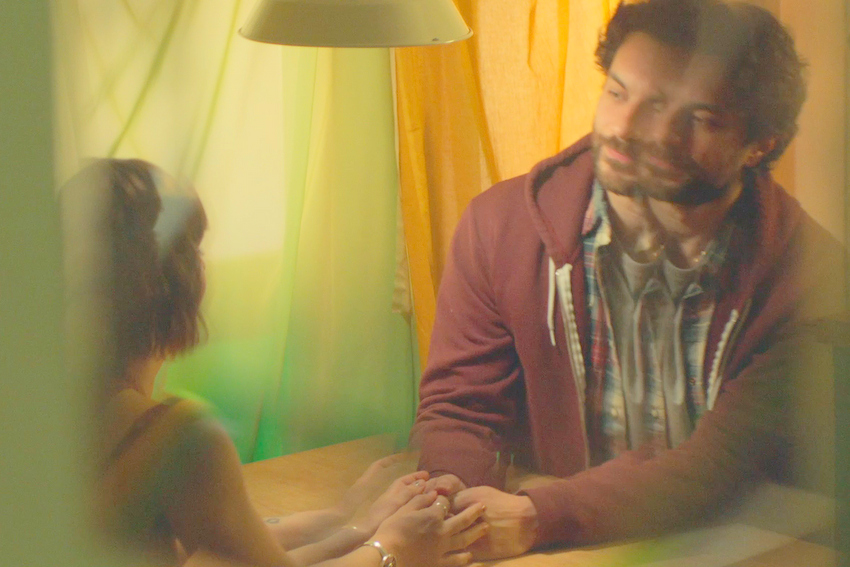
Can you talk about the visual style? It’s quite beautiful and considered and often contrasts with the grotesque moments unfolding?
Laura Jai Smith (LJS): DOP Estefania Carpio and I used the widescreen ratio because a relationship falling apart is central to the story and widescreen gives opportunities for framing two people so that the distances between them change as their relationship changes. We also used colour, camera movement and lenses to reflect their changing relationship- in the opening scene warm lighting, haze and closeups give a soft, romantic feel; later locked off frame and cold grey/ blue lighting reflects the distance between them. Similarly the body horror scenes have an increasingly sickly greenish yellow hue and use of the macro lens makes them feel more uncomfortably close and disgusting.
The design also reflects the changing relationship, so as well as having the rooms painted different colors designer Jenny Ray made the rooms change during the film by changing cushions, bed sheets, adding or taking off a table cloth. These things would happen naturally in a home but here they are used to express the changing relationship: like, at the start the bed sheets are warm pastels, enhancing the intimacy between Amy and Johann, by the end the sheets are dark, giving the room a foreboding cave-like feel.
Because Eleanor and Max had known each other a while we had real photos of them out clubbing etc when they were younger and one of them became the “Valentine card” Amy and Johann look at. For me it was perfect that what Amy and Johann would laughingly call their “first date” would have been a whole bunch of them going clubbing, getting off their faces, maybe having a drunken snog they can’t even remember…. It also alludes to this “turning point” they have reached – their “young” hedonistic life is falling behind them and they now feel they have to “move forward” and do what is expected of a thirty something couple that has been together a while- in the case of this film it’s having children which, even now is something there is often a lot of societal and peer pressure to do.
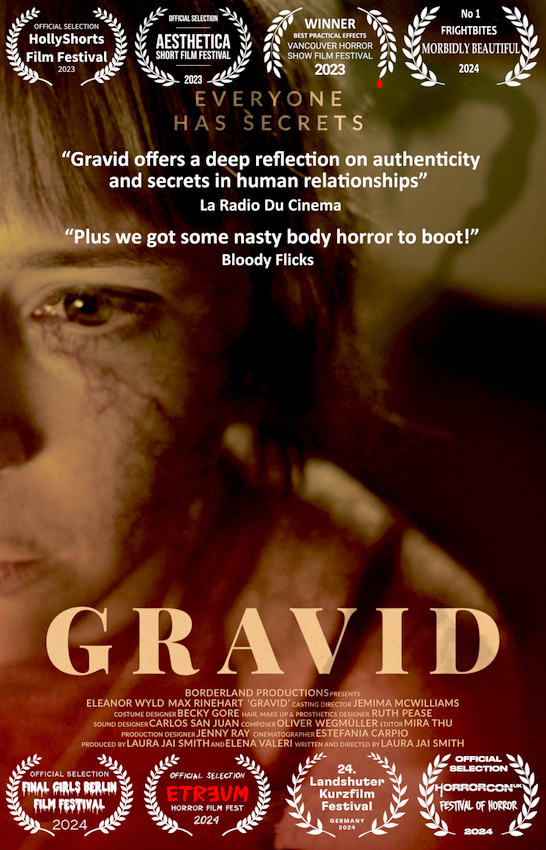
The sound and music really adds to the unpleasantness of the horror, can you talk about that?
Laura Jai Smith (LJS): I wanted the soundtrack to reflect Amy’s interior, emotional journey rather than what is literally happening. So, the hair being pulled out had to have a sound. Because for Amy it was so strange and unnerving, even though in reality we wouldn’t hear anything. Sound designer Carlos San Juan and I did a lot of experiments to create this. What’s here is a mix of the sound of hairy string being pulled through a papaya and various other elements. Carlos also added atmospheres to evoke emotion. I love his use of heavy rain towards the end to emphasize the coldness between them.
The music had to evoke Amy’s disturbing, unrecognizable experience. So, as much as possible, I wanted to use “instruments” that were also unrecognizable. By being specifically created for film. Our composer Oliver Wegmüller created the “instruments” from sticking microphones to his own body. Which I love as it also ties into the whole body-horror theme. Even when there is a pre-existing instrument like a violin. Oliver plays it in a grating, squeaky way so it’s not what we’d expect. The music also helped connect the different genre arcs. As well as the horror arc there is the arc of a romantic relationship going wrong. The music helps move between them.
How did the development and financing come about?
Laura Jai Smith (LJS): I wrote the screenplay. I knew from the start that I wanted the audience to be very close to Amy. I wanted the story to unfold almost entirely through her eyes. For it to take place over a couple of days, in the home she shares with her boyfriend. For the horror to be even more disturbing by coming from a seemingly quiet and familiar place. The film was primarily self financed. But, also received support in kind from companies I’ve built relationships with which helped keep the budget low.
We shot on one location, for three eleven hour days. Ten hours shooting plus one hour lunch break which is a fairly standard day in the UK. We also did a pick up day with skeleton crew. We started the edit remotely as editor Mira Thu is based in Copenhagen and then spent a week together. The music was also done remotely as Oliver is based in Helsinki. For me cinema is a world art form. I love collaborating with filmmakers from other countries. This has become easier since the pandemic made remote working more acceptable.
You’re also an experienced television drama director, how did that experience help with GRAVID?
Laura Jai Smith (LJS): Directing TV Drama gives you a huge amount and range of experience very quickly. The departments are also much bigger than I’ve ever had on a short film. There is more equipment and the schedules are usually much faster. So, my experience there gives me a lot to draw on. Especially in terms of balancing different approaches to different material. Practical problem solving, collaboration and speed of shooting.
But, I also draw on my experience. I started out exhibiting as an installation artist and photographer. I made short films funded by the BFI and Channel 4. And doing my postgraduate training at the UK’s National Film and Television school. On these projects the teams are much smaller and I’m involved in every area. This has given me the knowledge and flexibility to work on a small scale, with less collaborators. Which is really useful for a contained, intimate film like Gravid.
Tell us what you think of the Case Study for Gravid. What do you think of it? Let’s have your comments below and/or on Facebook, Instagram. Or join me on Twitter.
Socials
Website
IMDb
LinkedIn
Twitter
Instagram
Vimeo
MORE STORIES FOR YOU









